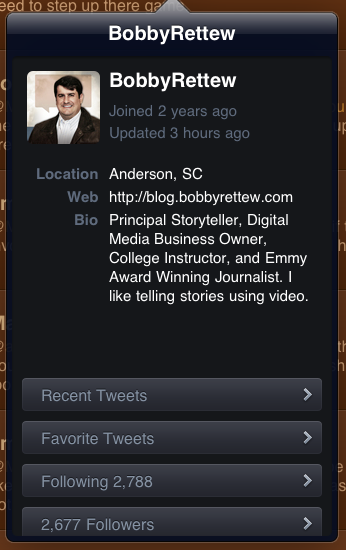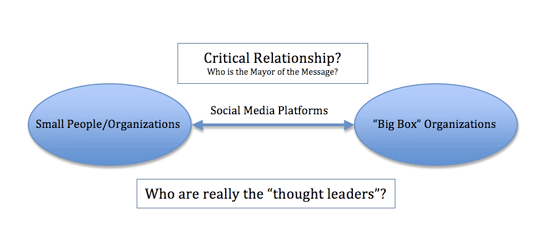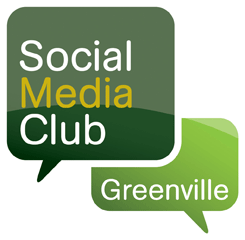
I think I remember engaging in the Social Media Club here in Greenville, SC and attending one of the early Monday morning events. It was a new crowd that I have ever been exposed and thought, I need to figure this out quickly! As I navigated this new paradigm, I realized that the only way I was going to figure this mess out is find thought leaders in my community…to not only engage online but meet in person. I quickly starting using this new found 140 character communication pathway to follow people. Those who had lots of followers and were relatively close to me in my area.
I met so many interesting and diverse people. We had a common theme…figure this crazy thing out! Along the way I met this one person via Twitter. This person walked to a similar beat as myself. I started following this person’s Tweets and began to realize he not only had something to say but also had a good sense of business…and this crazy new paradigm shift. As I followed him, I started going through who was following him and who he was following. Honestly, I followed as many of people he was following as I could. I spent the first three months just watching the conversations. Learning the lingo, understanding the relationships in this place, figuring out who was doing business and who was just shooting from the hip without a leg to stand on!
This was right before the market “crash” and the marketing world was turned upside down. As I began to watch the conversations and see who was chatting, I quickly learned who the “thought leaders” were and who were those that were capitalizing on others ideas. I also learned how to leverage online relationships. Engage in thoughtful conversations and at the same time ask questions to help me figure out this new exploratory art, but not ask for too much info. You know, that free consulting thing that no one wants to give out.
I began to notice that this one individual had some street cred and he also shared some similar passions, using digital media and visuals to engage audiences. He was a photojournalist at heart! So I dropped him a DM and said, hey…can I buy you a cup of coffee. He agreed and one morning over two years ago in the Coffee Underground, I sat at a table and wondered if online business relationships could translate to in-person conversation. My new friend (and now colleague) and I shared a cup of coffee and a bunch of war stories about storytelling, photography, and this thing called Social Media.
Over two years later, we catch up, talk some business, have a few beers, and chat about dreams and possibilities! From branding, photography, documentaries, and even some local gossip…that beer every so often has turned into mutual trust. We have traded business, referred each other to potential clients, shared billable knowledge, and just shot the shit. Trust.

So here is my question…who have you met via a Social Media and truly created a real relationship? This is not a corny question! Who? Who can you say you met online using one of the technologies and now have taken the relationship beyond the digital interface? What is your Social Media ROI?


 To listen to the the complete presentation and conversation between Congressman Bob Inglis and Trey Pennington, go to
To listen to the the complete presentation and conversation between Congressman Bob Inglis and Trey Pennington, go to